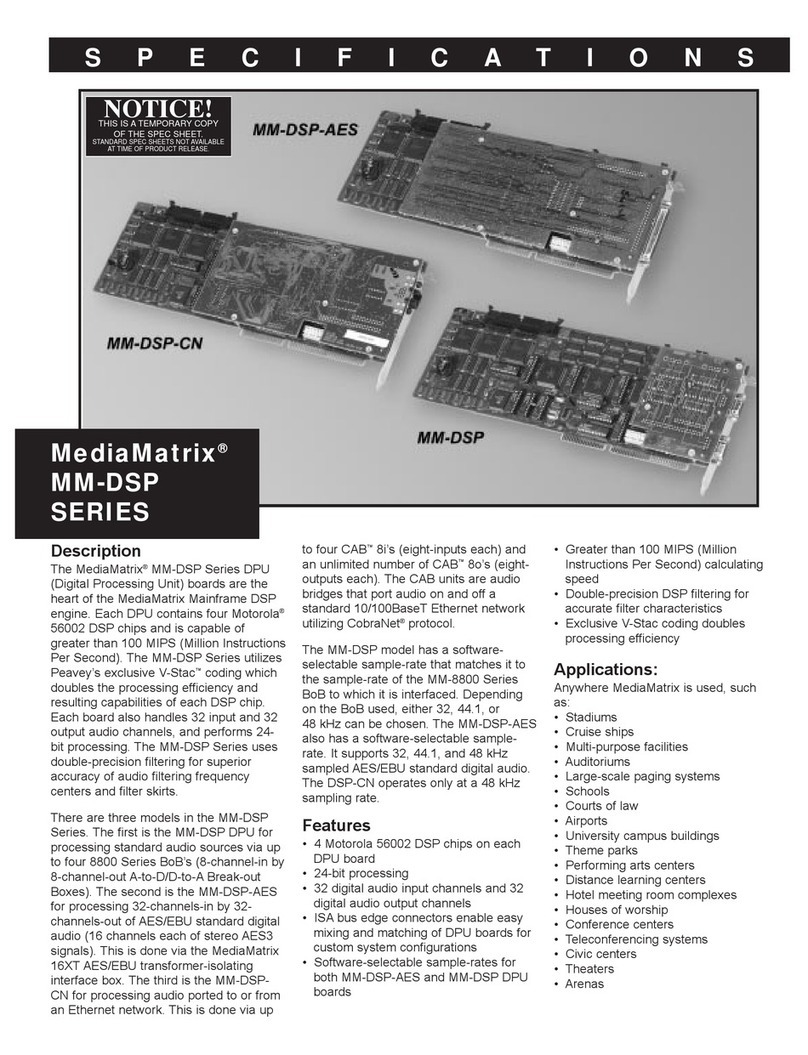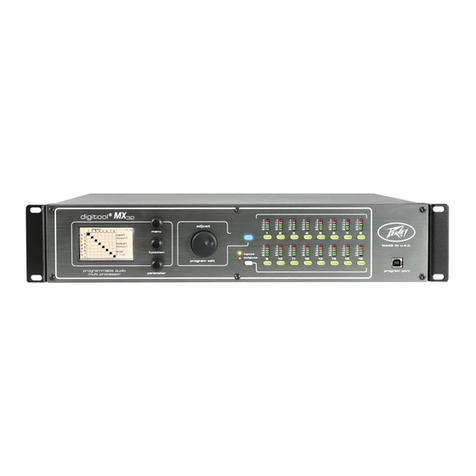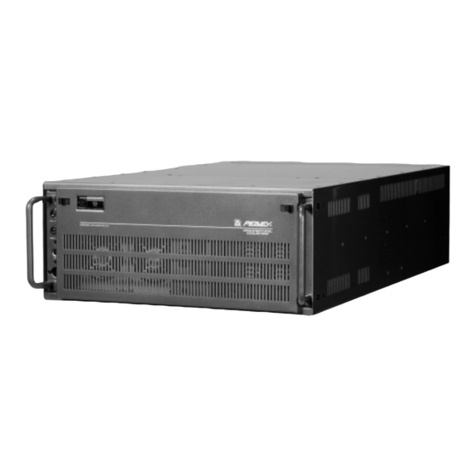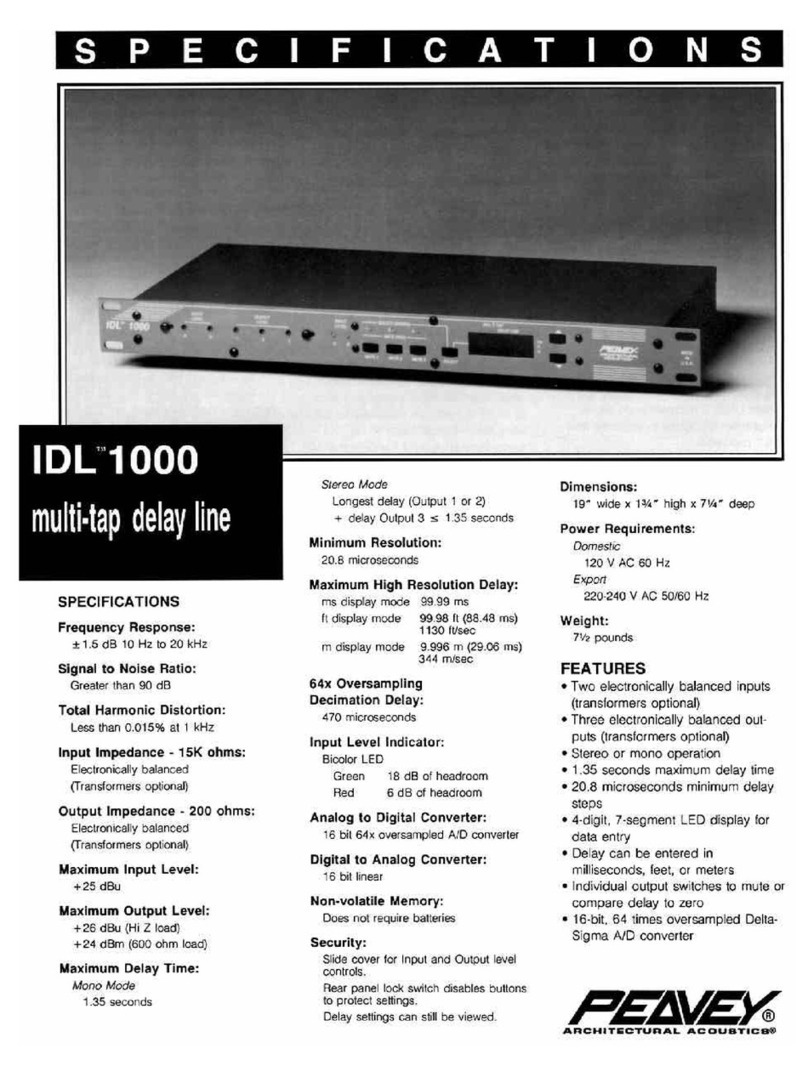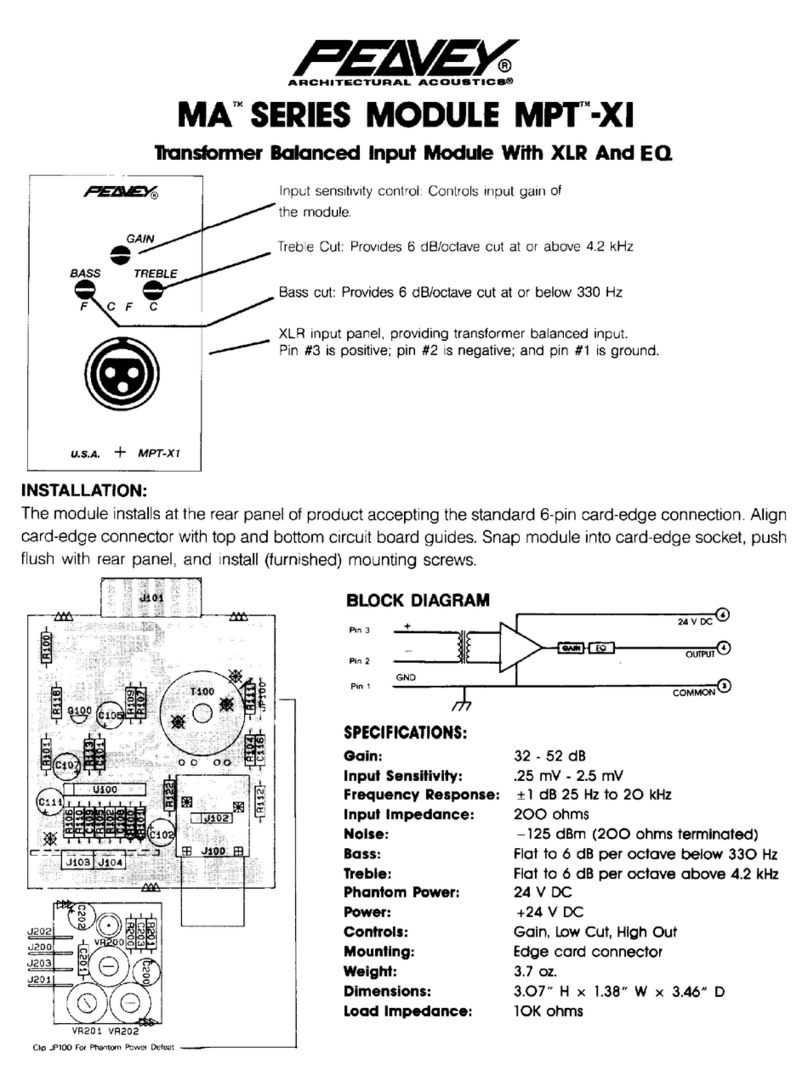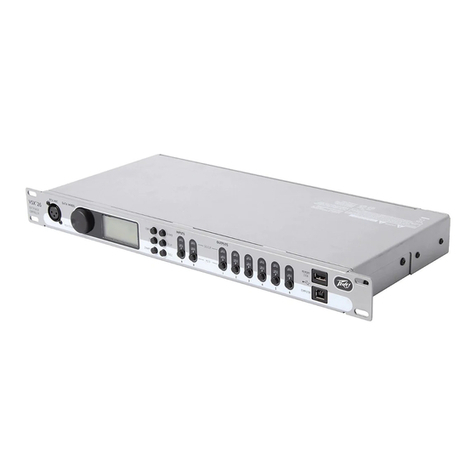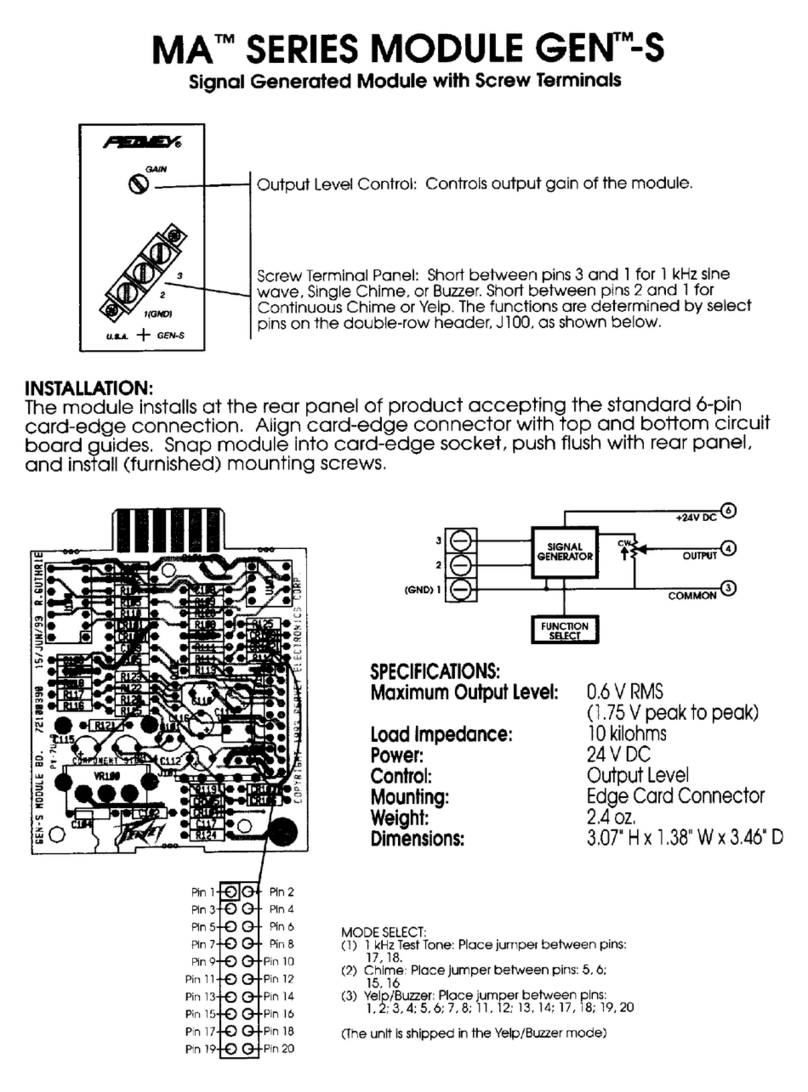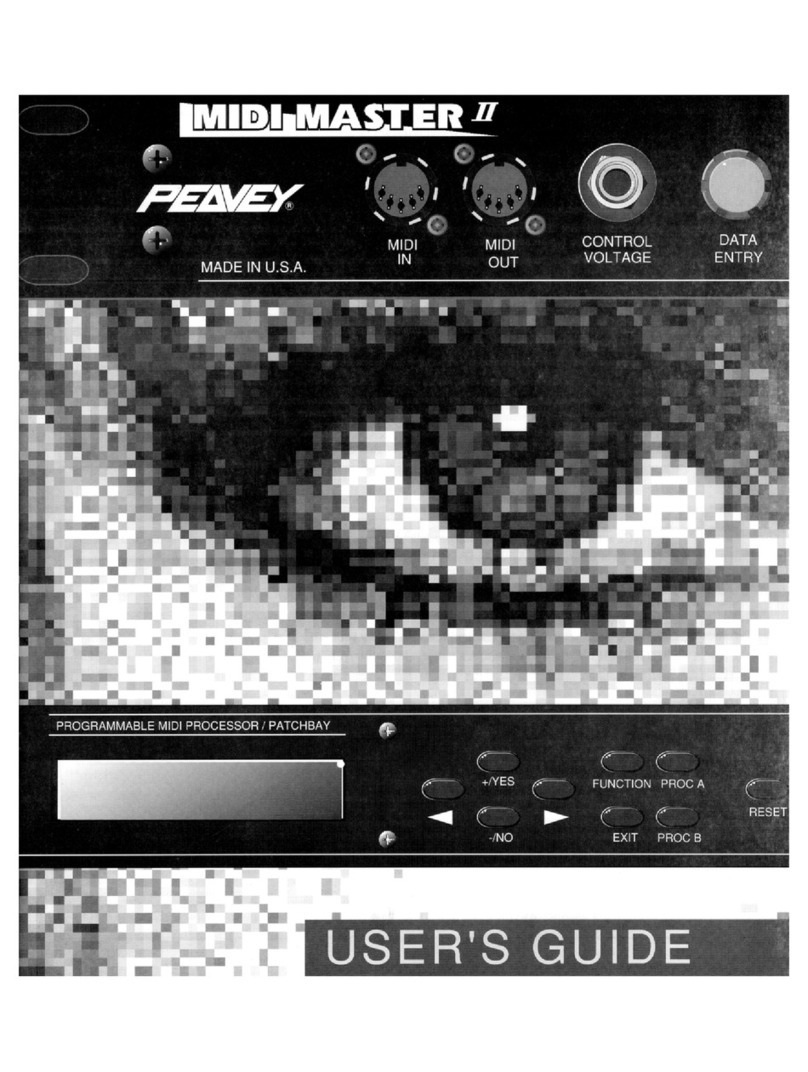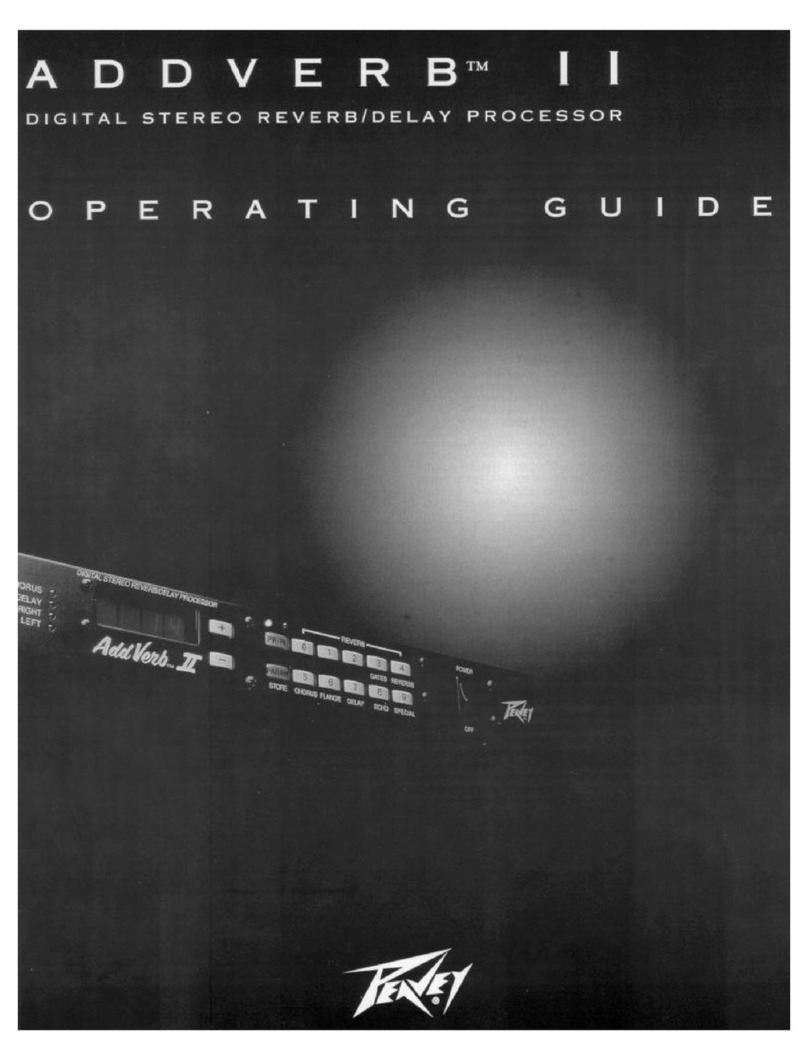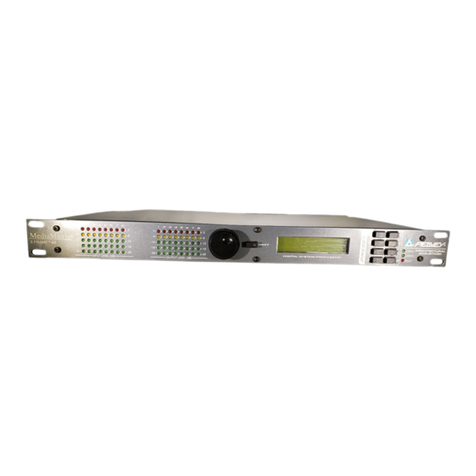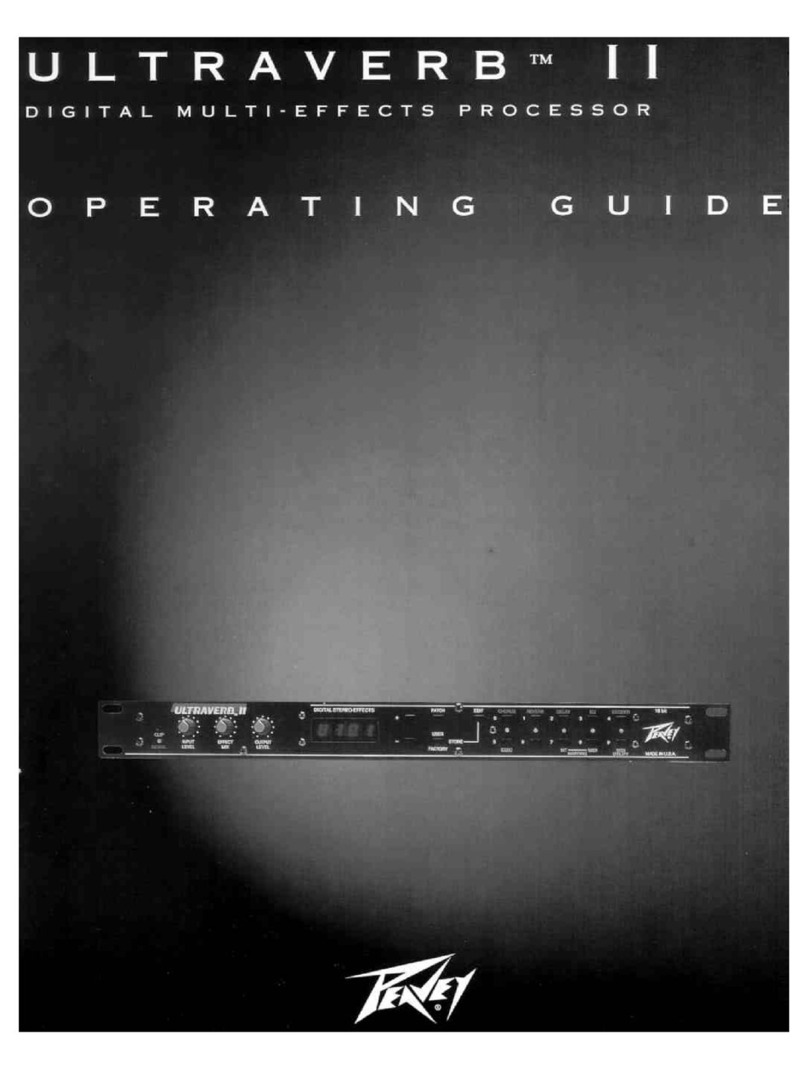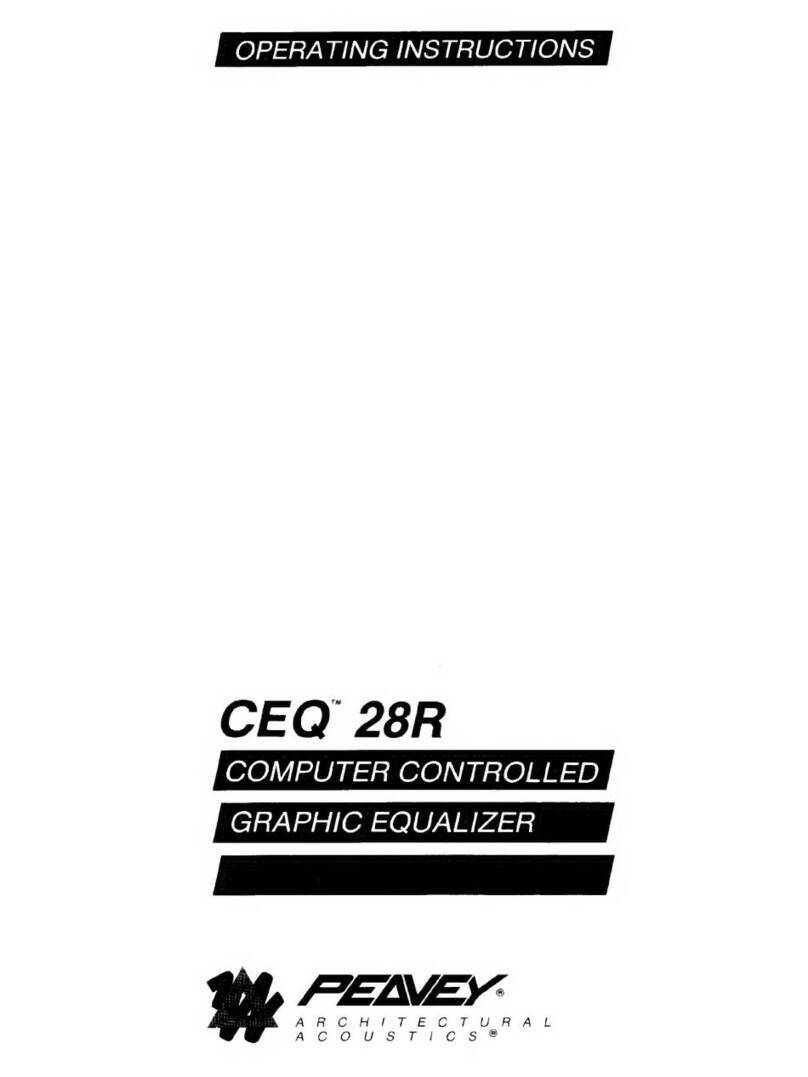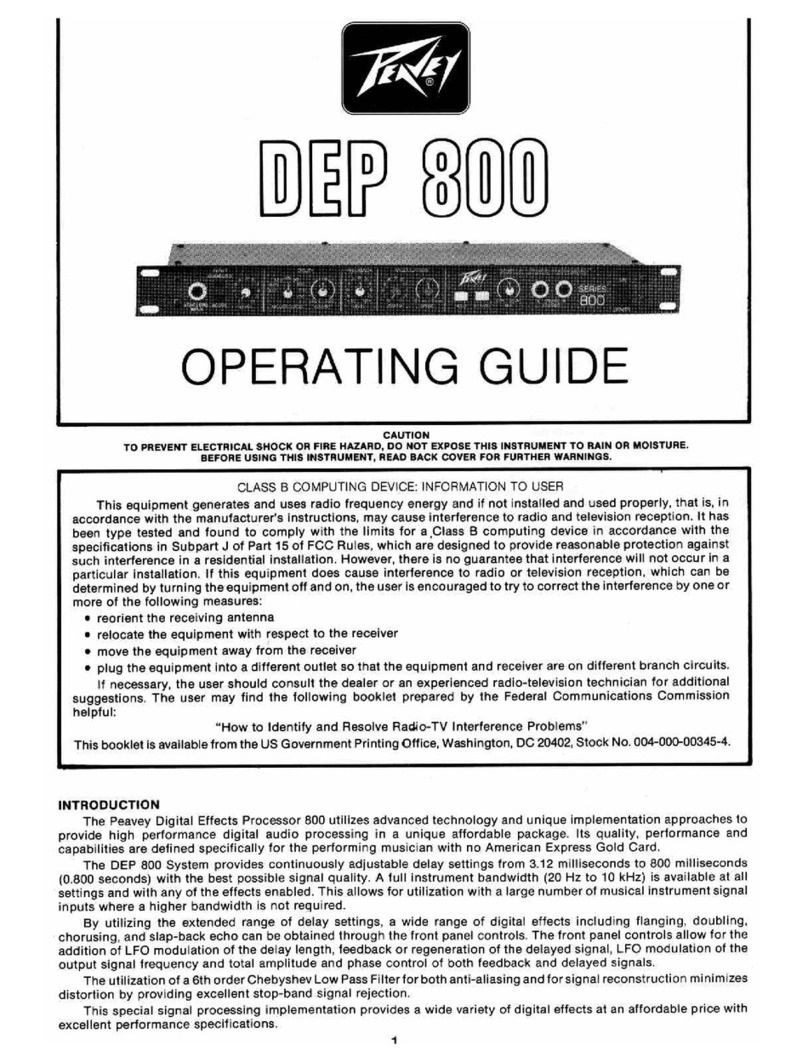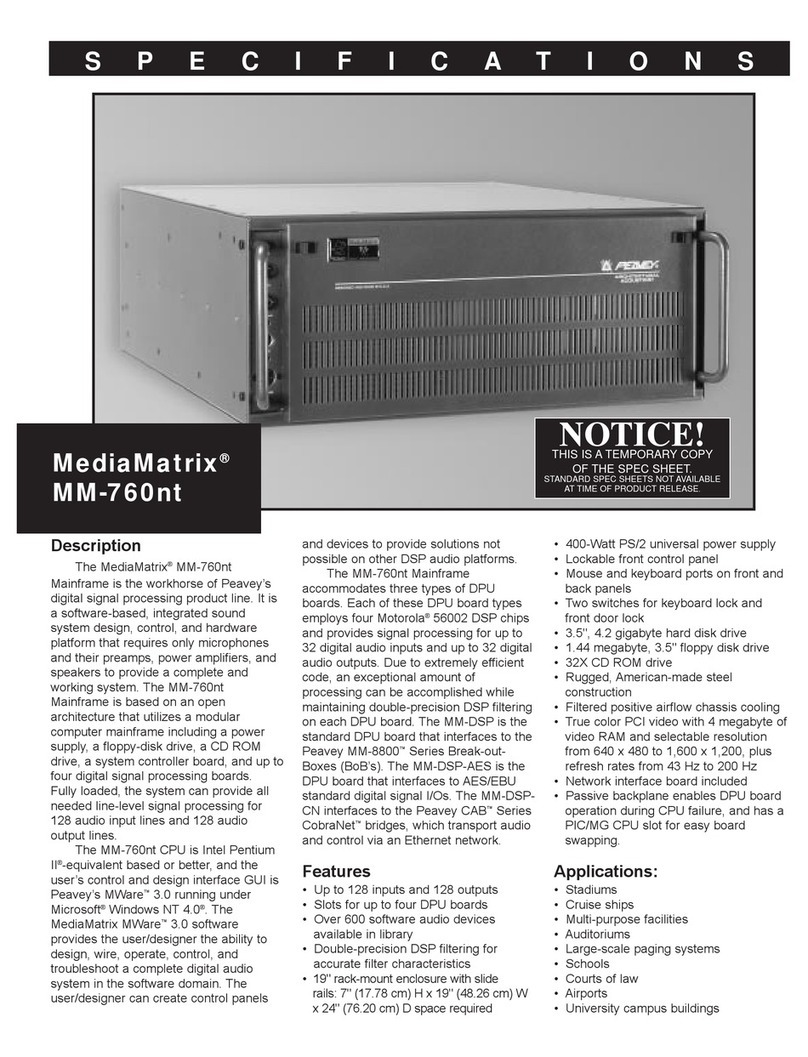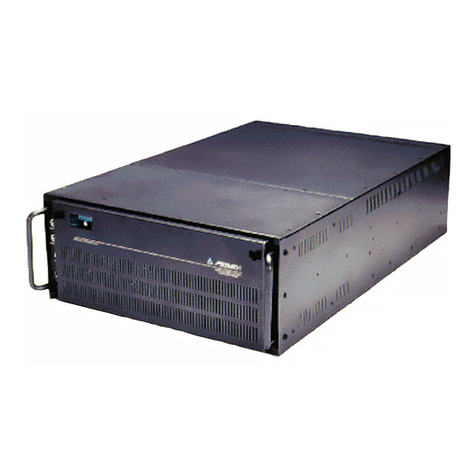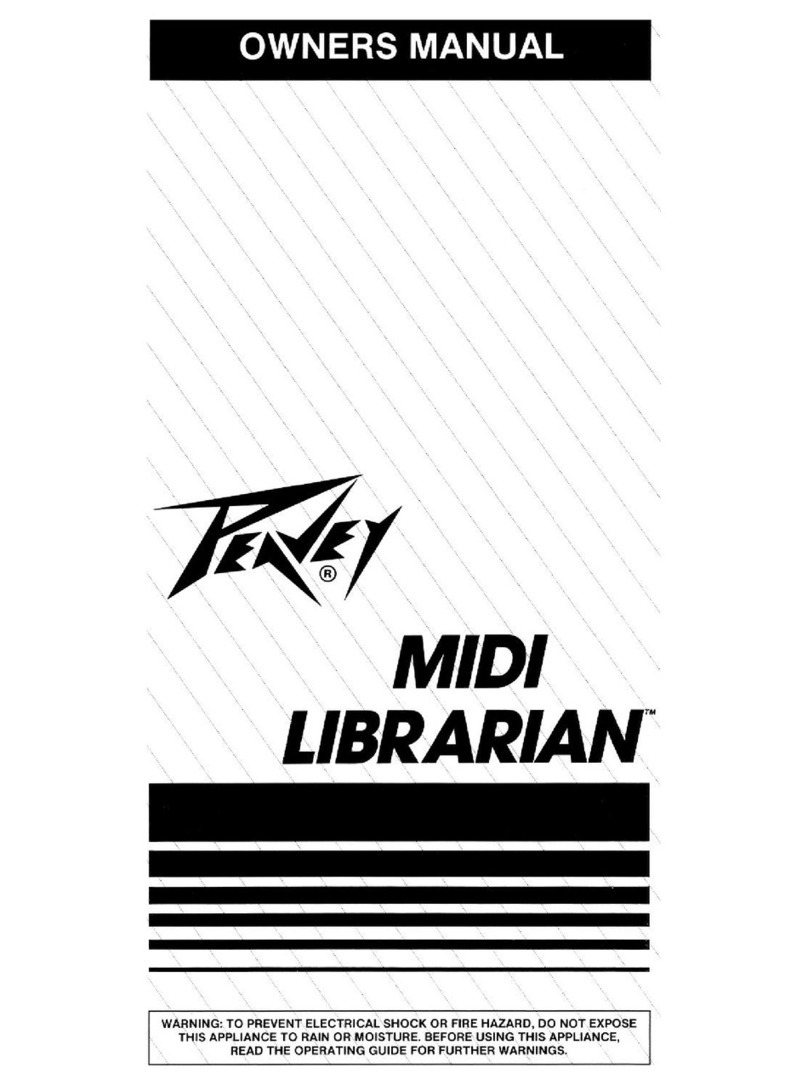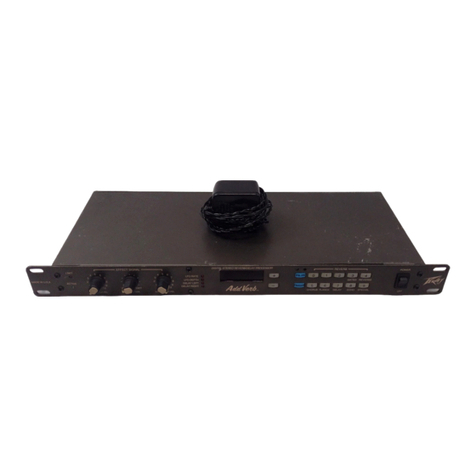Installation The MM-8802 is desi ned to be installed in commercial rade, EIA electron-
ic equipment racks only. Installin this unit in non-EIA racks or in other
confi urations is not recommended. Failure to install this product in the
proper enclosure may void your warranty.
The MM-8802 is forced-air cooled, and care should be taken not to block the
air intake or exhaust path. When installed in EIA racks, the MM-8802 can
be installed in adjacent rack spaces without additional ventin . However, it
is recommended that common sense be applied to lar e installations where
multiple units are mounted in a sin le rack. It is enerally accepted that a
ratio of one vent for every two MM-8802s is a ood rule of thumb that usual-
ly provides adequate performance. In installations where adverse conditions
exist, and room temperatures are likely to rise, additional vents should be
installed.
The MM-8802 can be installed into any EIA rack with an internal depth
clearance of 24" or more. This will allow plenty of space for the unit and its
associated wirin harness. When dressin off wirin harnesses, take care
with CAT 5 cables. Do not tie-wrap bundles of CAT 5 wire too ti htly.
Leave plenty of room for bends, allowin the cable to pro ress naturally from
the RJ-45 connector. Creatin ti htly wrapped CAT 5 wire bundles can
cause loose crimp joints and defective terminations.
To successfully install your new MM-8802, and perform the testin exam-
ples contained in this manual, you will need the followin components:
In MediaMatrix, the minimum confi uration consists of a sin le DPU pro-
cessin en ine (X-Frame or frame/DSP card combination), and I/O.
Dependin on your system, this may consist of several products. When
usin the MM-8802, at least one unit is required to confi ure the minimum
system. Of course, most systems will include more DPU products and mul-
tiple MM-8802s, but this is the most basic confi uration.
The use of hi h quality, network rade CAT 5 cables is required to success-
fully implement the MM-8802 with new MediaMatrix products. Please
refer to the section on CAT 5 cablin later in this manual.
MM™-8802 User Manual
Page 10 http: aa.peavey.com copyright 2001 All Rights Reserved
A MediaMatrix®X-Frame™, X-Frame 88, MiniFrame 108nt or 208nt, MM-
760nt, MM-960nt or MM-980nt Mainframe.
MWare™3.1.2, X-Frame 88 2.0 or later software.
PC monitor, mouse and keyboard. For use with the X-Frame products, a
separate personal computer runnin Windows®95, 98, ME, NT 4.0
w/SP6 or Windows 2000 Professional is required.
For frame-based MediaMatrix systems, you will need at least 1 MM DSP-
RJ or MM DSP DPU card.
Two CAT 5 cables are required for each MM-8802.
An audio source, power amplifier and loudspeaker.
•
•
•
•
•
•
